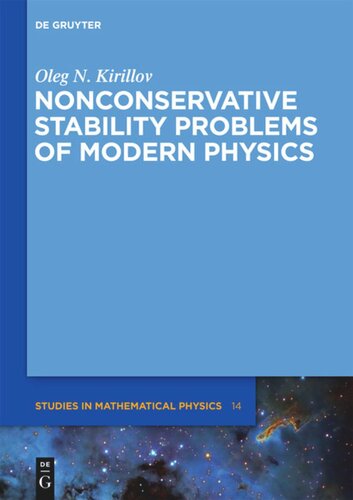

Most ebook files are in PDF format, so you can easily read them using various software such as Foxit Reader or directly on the Google Chrome browser.
Some ebook files are released by publishers in other formats such as .awz, .mobi, .epub, .fb2, etc. You may need to install specific software to read these formats on mobile/PC, such as Calibre.
Please read the tutorial at this link: https://ebookbell.com/faq
We offer FREE conversion to the popular formats you request; however, this may take some time. Therefore, right after payment, please email us, and we will try to provide the service as quickly as possible.
For some exceptional file formats or broken links (if any), please refrain from opening any disputes. Instead, email us first, and we will try to assist within a maximum of 6 hours.
EbookBell Team

0.0
0 reviewsThis work gives a complete overview on the subject of nonconservative stability from the modern point of view. Relevant mathematical concepts are presented, as well as rigorous stability results and numerous classical and contemporary examples from mechanics and physics.
It deals with both finite- and infinite-dimensional nonconservative systems and covers the fundamentals of the theory, including such topics as Lyapunov stability and linear stability analysis, Hamiltonian and gyroscopic systems, reversible and circulatory systems, influence of structure of forces on stability, and dissipation-induced instabilities, as well as concrete physical problems, including perturbative techniques for nonself-adjoint boundary eigenvalue problems, theory of the destabilization paradox due to small damping in continuous circulatory systems, Krein-space related perturbation theory for the MHD kinematic mean field α²-dynamo, analysis of Campbell diagrams and friction-induced flutter in gyroscopic continua, non-Hermitian perturbation of Hermitian matrices with applications to optics, and magnetorotational instability and the Velikhov-Chandrasekhar paradox.
The book serves present and prospective specialists providing the current state of knowledge in the actively developing field of nonconservative stability theory. Its understanding is vital for many areas of technology, ranging from such traditional ones as rotor dynamics, aeroelasticity and structural mechanics to modern problems of hydro- and magnetohydrodynamics and celestial mechanics.